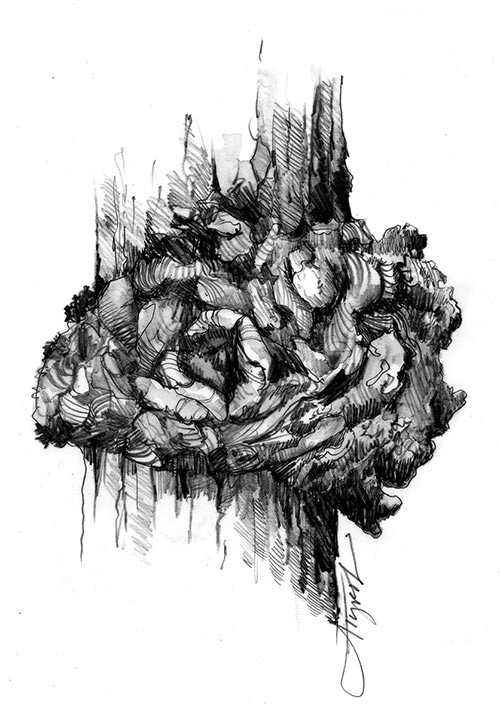
I’ve had my eye on this maple in my woods for some time. Not because it’s a beautiful timber tree. It’s only about eight inches in diameter, after all. But, it has an interesting burl about 14 feet up the trunk.
As a woodturner, I love the twisted wood grain found in most burls. A burl is a surprise package on a tree. Yes, straight grained wood is beautiful. I love the open grain of red oak, the milky brightness of birch, the rich burnished glow of cherry. But they are predictable. A burl is anything but.
I’m not the only one who loves burls.
Burl wood has been valued as an element in wood turnings and furniture for hundreds of years. According to Kevin Smith, a plant physiologist at the U.S. Forest Service’s Northern Research Station, they are so valued that they are sometimes the target of thieves. In 2012, Smith published a piece on burl biology in the newsletter of the Massachusetts Tree Wardens’ and Foresters’ Association. Next to his article was a report detailing several Massachusetts burl thefts, including one where arboreal bandits climbed 30 feet into a “very old sugar maple” to steal two burls from either side of the trunk. The theft of redwood burls has also made the news in California and Oregon.
What makes burls so sought after is the way that the grain of the wood is generally twisted, contorted, and deformed, producing what’s called “figure.”
Visualize a normal grain pattern as parallel strands of yarn. A burl would be a ball of yarn. It’s as though the tree’s cells went haywire and decided to tie themselves into a knot. That’s pretty much what goes on, Smith said.
In burl formation, the tree’s growth hormones get disrupted when the metabolism of the tree is hijacked by some other organism – a virus, fungus, or bacterium.
The crown gall bacterium is responsible for many burls (although many are too small for woodturning). That common bacterium is especially interesting, said Smith. It carries within it a little extra DNA, called a plasmid, which infiltrates the tree’s genetics. The plasmid prompts the tree to make special amino acids and growth regulators to produce the burl, which apparently is the preferred habitat for the bacterium.
Figuring out exactly what prompted the formation of a particular burl, however, isn’t always easy, explained Smith. The bacterium that started the process “can be long gone by the time the burl is of any size,” he said. “Burls are occasionally associated with dormant buds, but even that does not explain why they get ‘turned on’ here and not there. So verifiable proof of the cause of a turnable burl will be hard to come by!”
Burls don’t seem to do much harm to the tree or shorten its life, said Smith. The xylem, twisted and contorted though it is, still seems to do its job of transporting water and nutrients. “The vessels are still working and there’s still starch storage in the healthy outer parts of the burl, so it’s capable of normal function, though I’m sure that function is diminished.”
Cutting out burls, however, does damage a tree, since it leaves large wounds that are likely to become infected. If I decide I want to turn my maple burl rather than admire it from the ground, I’ll take the whole tree, turn the burl into a bowl or bowls and use the rest for firewood. It’s in the shade of larger trees anyway and the stand needs to be thinned.
With burls being so prized, you’d think someone would have figured how out to induce their formation and produce them commercially. Different methods of inoculating and wounding have been tried, but haven’t panned out, said Smith. It’s one thing to know how gall plasmids work, but “to induce that relationship between the bacterium and the tree and favor that over time, well, we don’t know how to do that.”
Another consideration is the long time span required. “It can easily be 30 to 40 years before a burl gets to turnable size. It’s not a get-rich-quick thing,” Smith said.
Perhaps the beauty of burl wood turnings and furniture is enhanced by the fact that it’s something we can’t mass produce on a whim, even with all the science at our command.


Discussion *